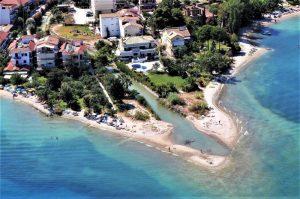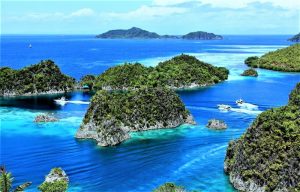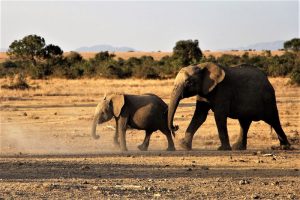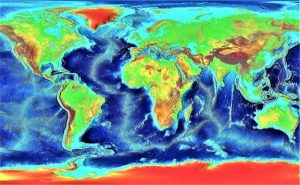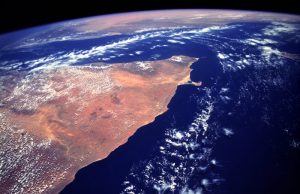Estuary
An estuary is a partially enclosed body of coastal water where fresh water from rivers and streams mixes with saltwater from the oceans. Estuaries and their surrounding lands are considered places of transition from land to sea. Although influenced by tides, they are also protected from the full force of ocean waves, winds and storms by landforms such as barrier islands or peninsulas. Estuarine environments are among the most productive on earth, creating more organic matter each year than comparable sized areas of forest, grassland, or agricultural land. Protected estuary waters also house unique communities of plants and animals that have adapted to life on the edge of the sea.
What is an estuary?
It is the part in which the watercourses that go to the ocean flow. They are generally located in areas where the tides are wide with beaches to the sides, that when they go away, exhibit their flora.
Etymology
The word estuary is considered as a cultism that comes directly from the Latin word aestuarium, which means coastal marsh, lagoon with waves or place of agitated waves. Today, the term has been used in the field of geography and geology. Aestuarium comes from the word aestus which means waves or agitation of the ocean waters, and is also derived from the word stela, which means trace of waves and foam left by a boat when sailing.
Estuary characteristics
The main characteristics of estuaries are as follows:
- They are considered transition zones in which fresh water from a river and saltwater from the ocean are mixed.
- In temperate zones, due to the mixture of waters, they tend to form marshes, and in tropical zones they give rise to mangroves.
- They have a great variety of environments or habitats which are very specific.
- The characteristic organisms that inhabit the estuaries have managed to develop special adaptations to be able to face the tides and the big salinity variations that the sea water presents.
- They present a high degree of turbidity because they are found at the mouth of rivers.
- Estuaries provide us with a set of resources, benefits and services.
- They provide places for recreational activities, scientific studies and tourism; they are an irreplaceable natural resource that must be carefully managed for the mutual benefit of all who enjoy and depend on them.
Formation of an estuary
An estuary is a partially enclosed body of water that is formed when fresh water from rivers and streams flows into the ocean, and when it reaches the ocean it mixes with saltwater from the sea. Estuaries and surrounding areas are transition zones from land to sea, and from freshwater to saltwater.
Fauna
Due to the diversity and complexity of habitats we can find a great variety of species that inhabit these ecosystems. Among these, there is a great variety of mollusks such as mangrove cockle, salmon and black oyster. You can also find a variety of crustaceans, such as blue crab, shrimp and shrimp pistol. Apart from fish, we also find mammals such as the crab raccoon and the otter. The most common fish are the marine catfish. And among the birds that inhabit the place, we find nocturnal herons, boobies, cormorants and pelicans, among others. There are also caimans and babillas.
It is common that during the night, the waters fill with zooplankton; and then they hide in the low and dark parts of the ecosystem during the day. The zooplankton feeds on phytoplankton and suspended organic matter, which in turn feeds small fish.
Flora
The estuaries’ flora is very diverse, and is characterized by aquatic vegetation such as reed, bulrush, and bijao. Mangroves can be found, where trees adapt to humid soils exposed to saline conditions and marine flooding. For this purpose, the mangroves have developed aerial roots formed by stirrups, which allow them to attach themselves to the ground.
Other vegetation that is found in them and associated with the mangrove are the walls of sea grasses, such as Thalassia testudium, which grow on sand substrates in shallow waters.
Reefs can also be found associated with very important ecological relationships, mainly of nutrient exchange and biomass, as large numbers of reef animals have their larval stages in grasslands and mangroves.
Location
Estuaries can be found along the coasts of the ocean, as it is the place where rivers flow.
Synonyms
Estuaries come in all shapes and sizes and have different names with which they are also known in different parts of the world, among them we can mention: bays, lagoons, ports, coves or canals.
Examples of estuaries
- Miera Estuary: the Miera estuary, also known as the Cubas river, has an intense anthropic pressure; fillings, draining, construction of dams, etc., which have altered the natural slope of the banks, the composition of the bottoms and their properties.
- Río de la Plata Estuary: formed by the union of the Paraná and Uruguay rivers, it is divided into the interior and exterior sectors. It has a triangular shape and an important marine influence.
How to cite this article?
Briceño V., Gabriela. (2019). Estuary. Recovered on 23 February, 2024, de Euston96: https://www.euston96.com/en/estuary/
